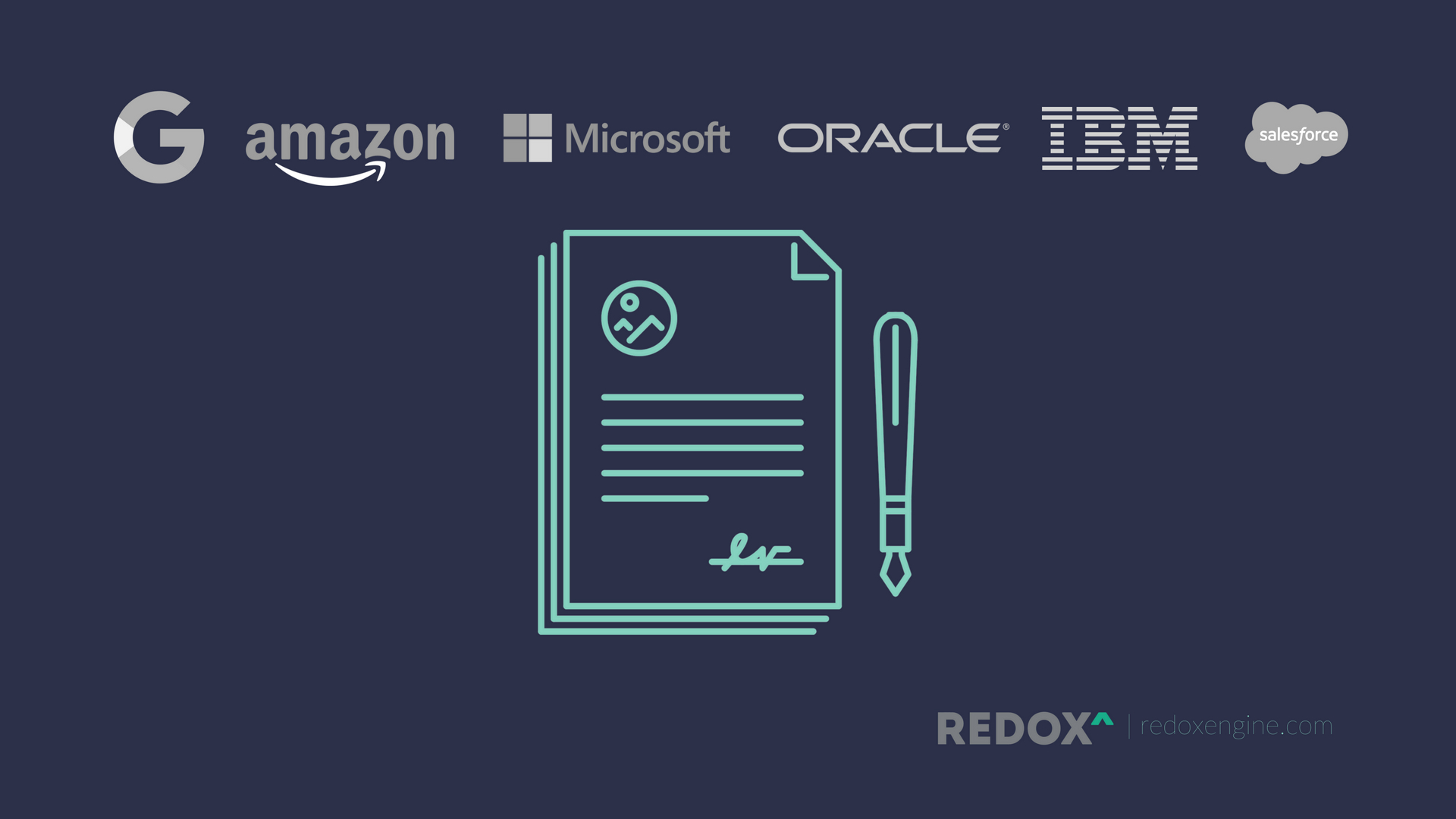Reading between the lines of the Amazon, Google, IBM, Microsoft, Oracle, Salesforce healthcare interoperability pledge
Aug 20, 2018

Last Monday, Amazon, Google, IBM, Microsoft, Oracle, and Salesforce released ajoint statement concerning healthcare interoperability. The “Pledge” was just that - a commitment to some generally broad agreeable principles. In this post, I try to read between the lines of the pledge and figure out what’s really going on.
In engaging in this dialogue, we start from these foundational assumptions:
The frictionless exchange of healthcare data, with appropriate permissions and controls, will lead to better patient care, higher user satisfaction, and lower costs across the entire health ecosystem.
Who can disagree with this on the surface? Looking deeper though, can frictionless and appropriate permissions and controls coexist? If these six had a preference, would it be for the frictionless side or the appropriate controls and permissions side? In the past, I’ve written about how the hypothetical future “app ecosystem” in healthcareundermines the protections under HIPAA. It’s an area where we should scrutinize AI and cloud hosting companies thoroughly before giving them access to our data.
Healthcare data interoperability, to be successful, must account for the needs of all global stakeholders, empowering patients, healthcare providers, payers, app developers, device and pharmaceuticals manufacturers, employers, researchers, citizen scientists, and many others who will develop, test, refine, and scale the deployment of new tools and services.
Another generally axiomatic point. It’s curious though that the joint statement only includes non-healthcare companies. Wouldn’t the press release have been more dramatic if a handful of big EHR vendors signed on? The companies involved don’t really represent any of the litany of stakeholders, outside of patients. How will these six reach out across all of these realms and make sure everybody is on board?
Open standards, open specifications, and open source tools are essential to facilitate frictionless data exchange. This requires a variety of technical strategies and ongoing collaboration for the industry to converge and embrace emerging standards for healthcare data interoperability, such as HL7 FHIR and the Argonaut Project.
This makes me happy. Good documentation and open source tools go a long way into building an ecosystem. In the past, these companies have successfully collaborated through IETF and W3C to make the internet we know today. Contrast that with HL7, which only opened their specifications in 2012. There will no doubt be a measure of culture shock when these big companies walk into rooms dominated by EHR vendors, consultants, and career standards people. If anything, new blood in the healthcare standards world would be a huge win.
We understand that achieving frictionless health data exchange is an ongoing process, and we commit to actively engaging among open source and open standards communities for the development of healthcare standards, and conformity assessment to foster agility to account for the accelerated pace of innovation.
This is the most savage and potentially concerning to the established health IT industry. The key phrase here isconformity assessment to foster agility to account for the accelerated pace of innovation. In my words, I think this means: we’re going to be calling out companies who don’t use conformant FHIR, and EHR vendors need to get off your butts and implement faster. Even though these six companies are huge, they don’t have much leverage over established players. One lever they may move is the upcoming “Data Blocking” rules in the 21st Century Cures act. If these six companies start ratting out EHR companies that aren’t playing by their rules, we may be in for a less than cooperative future.
Will Amazon, Google, Microsoft, et al. change healthcare interoperability?
Standards like HTML5 and HTTP/2 were successfully developed through collaboration between these companies (and others). HTTP/2 is an “all or nothing” standard - either you do it right or it doesn’t work. HTML5, on the other hand, is one where these companies compete on implementation, Chrome, Safari, and IE all have different quirks and tradeoffs, many of which vex web developers.
Does healthcare resemble one of those standards more than the other? I think a good way to judge these is by the network of implementers. There are relatively few browsers and nearly infinite number of content generators in the world for HTML5. Likewise, the network for HTTP/2 is a much smaller set of clients and servers, with both sides being implemented by the same people generally. Healthcare fits snugly in the middle.There are somewhere between 1,000 and 2,500 ONC certified Health IT products out there today, depending on how you count. Those products are all some mix of producers and consumers of health data.
Given the sheer size and fragmentation of the healthcare IT market, I’m excited to see additional involvement from these six behemoths. That said, pledges are usually hollow. I remember theEHR Vendor code of conduct which has done little to improve interoperability since 2013. These six companies represent a market cap of nearly 4 Trillion dollars, that amount of weight certainly has the potential to move the needle if they are serious and sets the stage for a showdown with entrenched players. How things shake out from here remains to be seen but one thing is for certain, we’ll be keeping a close eye on developments and sharing our perspective on the latest with you.
I joined Redox knowing how big of a problem enabling thefrictionless exchange of healthcare data, with appropriate permissions and controls is and it’s something I believe a centralized network like Redox is uniquely positioned to solve.
